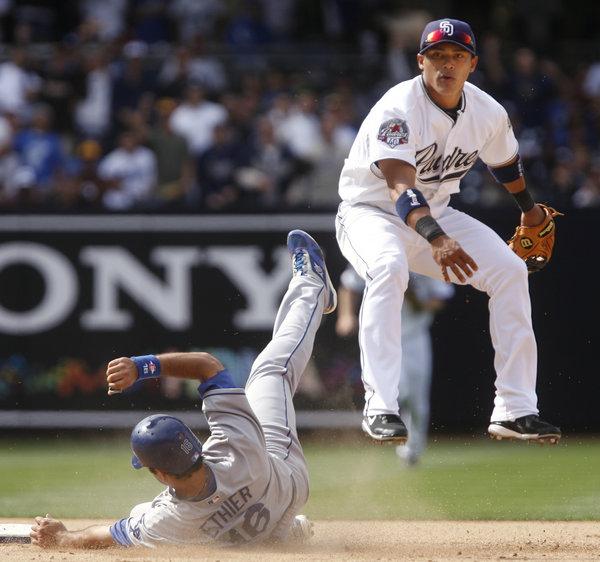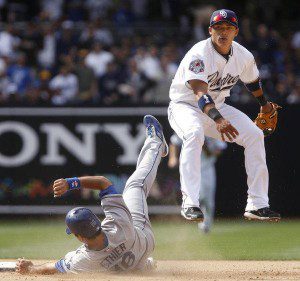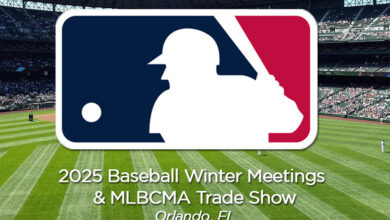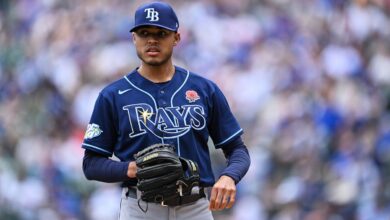

When American fans cheer for their favorite Hispanic players in most major league cities, they generally stereotype these athletes as being from the Dominican Republic or Venezuela. And why not? These countries are the hotbed for for baseball in Latin America. That’s where all the elite academies are located, especially in the Dominican. That’s where are the scouts go to salivate over the abundance of young talent, sort of like a kid in a candy store. So, it makes perfect sense that over 80 percent of Latino national big-leaguers were born in those two countries. That statistic, though, might need to be adjusted in the near future.
Many creative recruiters who search the region are discovering that baseball is on the upswing in Mexico and Central America. The bus rides are long and hot, and the fans are usually drunk and boisterous. The fields are sun-cracked and dusty, and a stray dog or chicken may wander into fair territory during the middle of an inning. A player really needs to love the game in order to play under these conditions. But for a scout who can endure these elements, the efforts are often rewarded.
Although Bobby Avila and Ruben Amaro Sr. were Mexican major-league pioneers in the 1950s and ’60s, it was port-side pitcher Fernando Valenzuela who put Mexico on the map in 1981. Prior to “Fernandomania,” the most notable, modern-day player was my pal Mario Mendoza, a slick-fielding, light-hitting shortstop for the Pittsburgh Pirates. Mario will tell you that the term, “Mexican hands,” alludes to his flawless glove work. And he bristles when folks correctly say that he is best known for the infamous “Mendoza line,” a batting-average gauge for players in a batting slump.
On the other hand, Oaxaca-native Vinny Castilla was a great hitter, who holds the distinction of being Mexico’s all-time home run king with 320 career jacks over 16 seasons.
Esteban Loaiza, Armando Reynoso, Vicente Palacios and Teddy Higuera were successful pitchers who would pave the way for current superstars like Yovani Gallardo, who proudly honors Higuera by wearing number 49 on the back of his jersey. Besides Gallardo, quality pitchers currently dotting the landscape include Jaime Garcia and Jorge De La Rosa.
If Valenzuela was the mound hero for all Mexicans, then the great Dennis Martinez was a similar icon for Nicaraguans, which is why he is still called “El Presidente” (with the approval of Daniel Ortega). Martinez played in the major leagues for 23 years, and never won more than 16 games because he usually threw for bad teams. He did, however, earn a World Series ring in his younger days with the Baltimore Orioles. Martinez is also the only Latino player to pitch a perfect game, accomplishing the feat against the Los Angeles Dodgers in 1991 while with the Montreal Expos. His 245 career wins is tops among Hispanic hurlers. Aside from Martinez, however, the only other big leaguer of prominence from Nicaragua was David Green, a flashy outfielder whose career spanned six seasons with the Milwaukee Brewers and St. Louis Cardinals.
Panama has a much richer baseball history stateside, beginning with Pirates Manny Sanguillen and Rennie Stennett, and Omar Moreno who came a bit later. Bullpen setup specialist Ramiro Mendoza won five rings with the New York Yankees and Boston Red Sox, and the legendary Mariano Rivera has an even larger collection. It’s also a safe bet that Rivera will eventually join Rod Carew with a plaque at Cooperstown.
Worth mentioning is a spillover of baseball interest from Mexico has now spread across the border in Guatemala. Low-level A ball is played in the capital city and a training facility, the Galvez Sobral Academy, has been graduating decent players for several years. Andres Aguilar, 18, who currently plays in the Baltimore Orioles organization as an outfielder, is a case in point. And did you know that the mother of Cleveland Indians outfielder Ryan Spilborghs was born in Guatemala? Alright, I know that’s a stretch, but I’m sure you get the picture.
Now for the drum roll, here is my short list of key players to check out this season, along with each country’s best prospect:
Nicaragua
Everth Cabrera, SS, San Diego Padres — All Cabrera is thinking about this season is getting a fresh start, like in 2008 when the Padres picked him up in the Rule 5 draft. He enjoyed instant success the following year until he broke the hamate bone in his left hand during a mid-April game against the Philadelphia Phillies. Since then, he’s been dogged by a similar injury to his throwing hand, several groin pulls and other ailments.
Now completely healthy again, he’ll be backing up Jason Bartlett and Orlando Hudson in the middle infield. But with both veterans in the final year of pricey contracts, Cabrera will likely fall into a starting job more sooner than later.
A native of Nandaime near the colonial city of Granada, Cabrera, 25, is a shortstop by trade with a strong arm and above-average range. He’s also a switch-hitter and prolific base stealer. Most importantly, though, Padre manager Buddy Black loves Everth’s “Charlie Hustle” style of play.
Wilton Lopez, P, Houston Astros — Originally signed by the Yankees in 2002, Lopez was dubbed a career minor-leaguer and released five years later. Picked up by the Padres, he had his ups and downs until the Astros grabbed him off waivers in 2009. Finally, at age 26, things started to click.
The last two seasons with Houston, Lopez has compiled a record of 7-8 with a combined ERA of 2.87 in various scenarios. While Brett Myers has been named the designated closer for the Astros, health issues involving Brandon Lyons might open the door as a possible setup role for Lopez out of the bullpen. The bottom line: With the rebuilding ongoing in Houston, Wilton has made the most of shot in the big leagues.
“All I want to do is make a positive contribution and help the team,” he says.
Top Prospect: Cheslor Cuthbert, 3B, Kansas City Royals — Islas del Maiz (Corn Islands), is a Caribbean paradise most vacationers want to keep top secret. So, it’s ironic that a 19-year-old baseball player would put the place on the map. That’s why Cuthbert is such an interesting story.
A couple of scouts saw Cuthbert display his raw talent during some games on the main island, Big Corn, and he was reportedly being groomed by the Pirates. But when the Royals saw him standout in the Dominican Prospects League, they had their checkbook ready. As a result, the 6′-1″, 190-pound phenom signed a bonus package worth $1.4 million, a record sum for any Nicaraguan player.
The thing that sticks out about Cuthbert is his quick bat and tremendous power. As a third baseman, Cuthbert is a work in progress, but he’s quick with a plus arm and could possibly end up as a corner outfielder. I really like this kid and so do the Royals, who rank him as #5 on the prospect chart.
Panama
Ruben Tejada, SS, New York Mets — I’ve covered this before, but it’s worth repeating that the 22-year-old Tejada will be under the microscope in New York as the shortstop asked to replace Jose Reyes. And Mets manager Terry Collins didn’t help matters any by accusing Tejada of reporting late to camp, when he actually got there at the same time as everybody else. Nice job, skipper.
At the end of the day, I think Citi Field fans will very appreciative of Tejada, especially his defense. He still has to figure things out at the plate, but the Mets won’t be contenders for a while anyway.
Randall Delgado, P, Atlanta Braves — The Braves’ minor-league system is loaded with talent, especially right-handed pitching, and it will be interesting to see how manager Fredi Gonzalez decides to use the 22-year-old Delgado. As the organization’s #3 prospect, he is almost a year older than Julio Teheran and Arodys Vizcaino, the only players with a higher ranking. And Delgado is capable of both spot starting and coming out of the bullpen, which makes him more versatile.
The 6′-3″, 200-pound youngster made his major debut last season with two emergency starts, and pitched into the seventh inning in his second outing. Delgado has struggled at times with his command, but would seem to be more durable than the injury-prone Vizcaino.
“I think I learned a lot last year that I can put to good use this season,” said Delgado before heading to camp. “The experience was very good for me.”
Top Prospect: Christian Bethancourt, C, Atlanta Braves — Even though he was a star catcher as a teenager in Panama City, Bethancourt would quickly find out he was a big fish in a small pond. That meant there would be plenty of adjustments to be made when he jumped to the Dominican League and later on to learn the American side of the game.
Still only 20, Bethancourt has started to demonstrate his ability to become a major-league receiver and leader on the field. His 6′-2″, 195-pound frame is starting to fill out, and he has shown to be very mature with a strong desire to succeed. Even after doing well at high A ball and in the Arizona Instructional League, he understands there is much still to learn at the plate and behind it.
“I’ve always been an aggressive hitter, but I know I have walk a lot more and use my hands to hit the ball to all fields,” Bethancourt noted in very good English, something else that he’s learned on the fly.
Atlanta has Bethancourt rated #5 on the chart, and his stock continues to rise.
Mexico
Joakim Soria, P, Kansas City Royals — The fans have always treated the “Mexicutioner” like “Royalty” in Kansas City, even if he blows an occasional save. But the Kauffman kids could be for real, especially since the starting pitching has vastly improved. And Soria’s inflated ERA of 4.03 last season was unacceptable, especially for a guy who is supposed to slam the door.
Soria will make $6 million this season and will be expected to turn things around. If not, newly acquired Jonathan Broxton may take over the Royals closer role and Soria will be on the trading block.
Jorge Vazquez, 1B/DH, New York Yankees — Billionaire businessman Carlos Slim is a huge Yankee fan, which is odd since most Mexicans still follow the Dodgers. Now, I don’t know Mr. Slim personally, but I can imagine that he has a direct pipeline to Hal Steinbrenner’s office in Tampa and is strongly lobbying for his countryman Vazquez to make the team as the right-handed designated hitter.
Everybody in Mexico, it seems, knows Vazquez, a legendary slugger who hits baseballs over the moon. Well, almost that far.
“I remember seeing him hit a ball over the center-field fence, out of the park and into he middle of the parking lot,” recalls Ramiro Pena, a utility infielder with the Yankees who has played with Vazquez during the offseason. “Everybody knows him down there.”
Vazquez has hit some bombs in Tampa the last couple of years as well, but has never been able to break camp with the varsity. You see, Vazquez is just a mediocre first baseman and the Yankees have a lot of great hitters. Ahead of him as a right-handed DH is Andruw Jones, and Alex Rodriguez is a year older and can’t play third base everyday. Vazquez is getting older too, soon to be 30, and time is running out for a shot at the show.
“I can’t worry about the numbers game and the guys ahead of me,” says the slugger Mexicans fondly call “El Chato.”
“The only thing I can do is stay focused and swing the bat.”
Top Prospect: Manny Banuelos, P, New York Yankees — Unlike Vazquez, the 20-year-old Banuelos knows he’ll be playing with the Yankees for a long time. The only question is when that will finally happen. Although he’s New York’s #1 prospect, Banuelos is merely a non-roster invitee to spring training. That’s understandable, since major-league service time is defined by certain dates, and the Yankees want to keep the kid under team control for as long as possible.
There are other things, though, that are puzzling. Banuelos was on a strict pitch and inning count last season through both double-A and triple-A stints in the minor leagues. Although only 5′-11″ and 160 pounds, the little lefty throws pretty damn hard, and the lack of activity hurt his pitch location and walk ratio over nine innings.
Since Mariano Rivera has called Banuelos the best pitching prospect he’s ever seen, it would be nice if manager Joe Girardi would remove Manny’s training wheels and let him team up with Mo sometime this season. That would be fitting, as Rivera has strongly hinted that this will be his final year.
While there is certainly a unique group of players who have come on the scene from Central America, the main new surge of talent is coming primarily from Mexico. But for all these guys, the real issue is national pride. Every player I know is proud of his roots. That said, they also admit the road to success has been hindered by lack of exposure, with prospects in the Dominican holding all the cards.
I tend to agree with that assessment, and as a journalist, it’s my job to spread the word and try to make things right.






